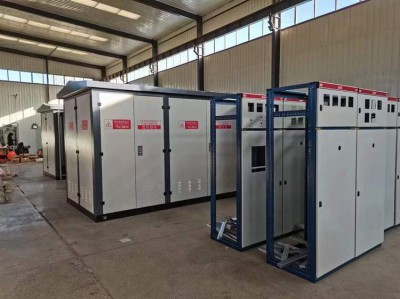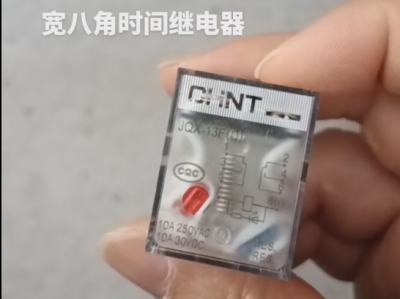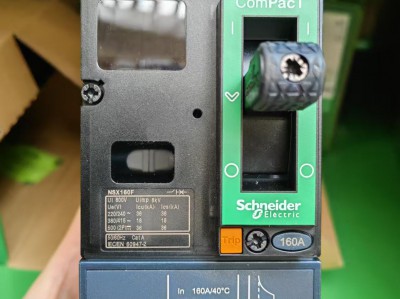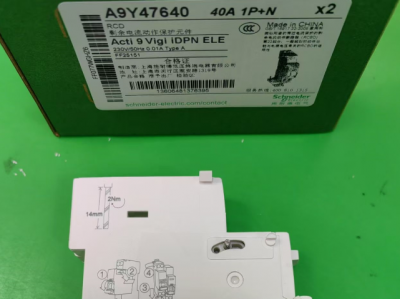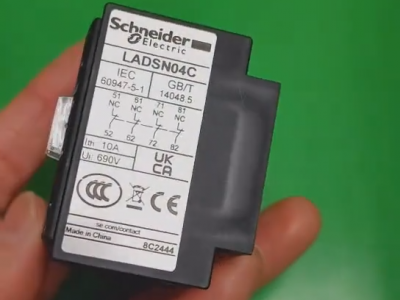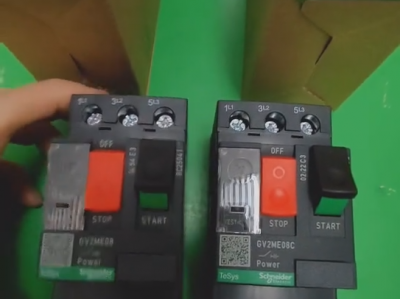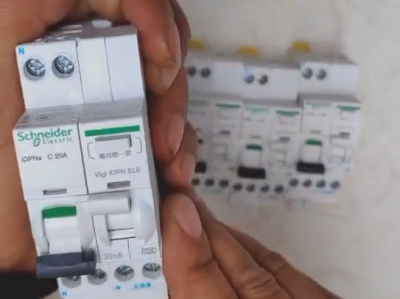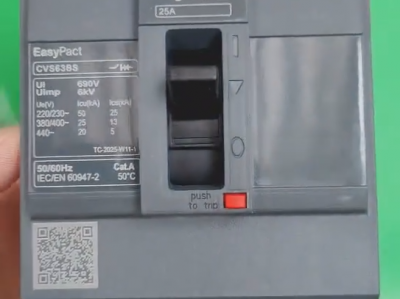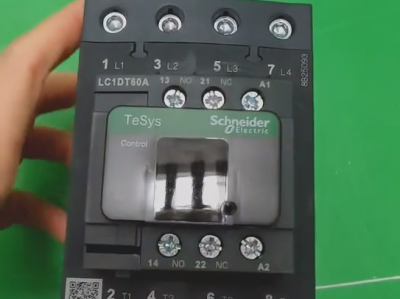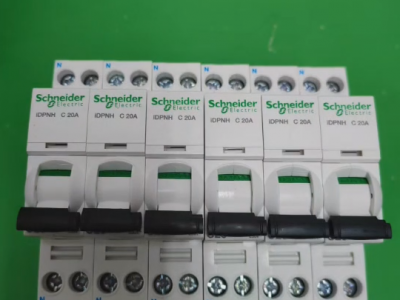Chint AC contactor coil NXC-25-220V
Product description
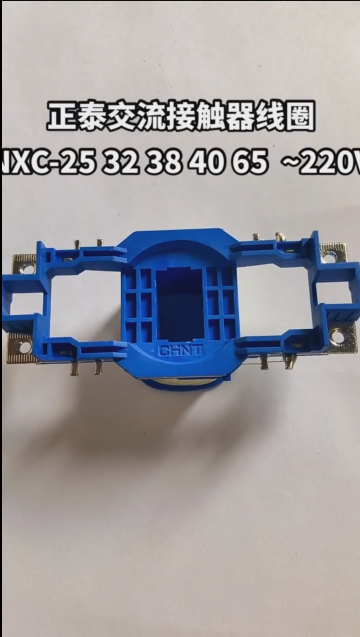
The Chint AC contactor coil NXC-25-220V is part of the Chint Kunlun series AC contactors.
- **Basic Parameters**: The control coil type is AC, the coil voltage is 220VAC, the default frequency is 50Hz, the number of poles is 3P, the rated current is 25A, the main contacts are 3NO (three normally open), and the auxiliary contacts are 1NO + 1NC (one normally open and one normally closed).Chint moulded case circuit breaker
- **Dimension Specifications**: The overall dimensions are approximately 93mm × 56mm × 87mm.
- **Product Application**: It is mainly used for frequently starting and controlling AC motors, switching on and off circuits remotely, and can form an electromagnetic starter with an appropriate thermal overload relay.
- **Working Environment**: The operating ambient temperature ranges from -35℃ to 70℃.
- **Installation Method**: The NXC-25 can usually be installed by rail mounting and screw mounting. The inclination of the mounting surface relative to the vertical plane should not exceed ±5°, and it should be installed in a place without significant shaking, impact, or vibration.
- **Compliance with Standards**: It complies with standards such as GB/T 14048.1/IEC 60947-1, GB/T 14048.4/IEC 60947-4-1, GB/T 14048.5/IEC 60947-5-1, and GB 21518.
The working principle of the Chint AC contactor coil NXC-25-220V is based on the principles of electromagnetic induction and electromagnetic attraction, as follows:
- **Energization and Pull-in**: When the control circuit supplies 220V AC power to the contactor coil NXC-25-220V, current flows through the coil windings. According to the principle of electromagnetic induction, an alternating magnetic field is generated. This magnetic field magnetizes the static iron core, producing electromagnetic attraction. This attraction overcomes the counterforce of the spring and pulls the moving iron core in. Since the contact system is linked with the moving iron core, the moving iron core drives the moving contact piece to move, causing the normally open main contacts and normally open auxiliary contacts to close, and the normally closed auxiliary contacts to open, thereby connecting the main circuit and supplying power to the load (such as a motor).
- **De-energization and Release**: When the coil is de-energized, the current in the coil disappears, and the magnetic field also vanishes. The electromagnetic attraction of the static iron core no longer exists. At this time, the moving iron core returns to its original position under the counterforce of the spring, driving the moving contact piece to move together. The main contacts and normally open auxiliary contacts open, and the normally closed auxiliary contacts reset and close, cutting off the main circuit and stopping the load.
During long-term use, the Chint AC contactor coil NXC-25-220V may malfunction due to factors such as environment, installation, and aging. Common problems and their causes are as follows:
I. Coil itself faults
1. **Coil burnout**
- Causes: Excessively high control voltage (such as mistakenly connecting to a 380V power supply) leads to a sudden increase in coil current and overheating burnout; or excessively low voltage, causing the coil to be in an undervoltage state for a long time, with excessive current leading to heat damage; in addition, aging of the coil insulation layer (humid environment, high temperature) may also cause short-circuit burnout.
- Phenomena: The coil has a charred appearance and a burnt smell. When measured with a multimeter after power-off, the coil resistance shows 0 (short circuit) or infinity (open circuit).
2. **Residual magnetism in the coil after de-energization**
- Causes: Oil stains and rust on the surface of the iron core result in poor contact between the moving iron core and the static iron core, or problems with the iron core material (excessive residual magnetism), causing weak attraction to remain after the coil is de-energized, preventing the moving iron core from releasing in time.
- Phenomena: The contactor contacts cannot be completely disconnected, and the main circuit or control circuit remains conductive.
II. Contact system faults
1. **Poor contact of main contacts or auxiliary contacts**
- Causes: Oxidation and carbon deposition on the contact surface (arcs generated by long-term switching of large currents), or contact wear and deformation (mechanical loss due to frequent actions) lead to an increase in contact resistance.
- Phenomena: The contacts heat up and spark, the output voltage of the main circuit is unstable (such as abnormal noise during motor operation, reduced speed), and in severe cases, the contacts are burned and stuck.
2. **Contact sticking**
- Causes: Excessively large arcs at the moment of switching (load short circuit, overload) cause the contacts to melt and stick; or insufficient elastic force of the contact spring, which cannot push the contacts open.
- Phenomena: After the coil is de-energized, the contacts remain closed, the main circuit cannot be cut off, and the load continues to run (such as the motor cannot stop).
3. **Failure of auxiliary contacts**
- Causes: The current of the auxiliary contacts is small, and if a large load is mistakenly connected, they are easily burned due to overload; or the contacts are oxidized, and the wiring is loose.
- Phenomena: The control circuit (such as self-locking and interlocking circuits) fails, and the contactor cannot pull in or release normally.
III. Mechanical structure faults
1. **Jamming during pull-in/release of the moving iron core**
- Causes: Excessively large inclination angle of the contactor during installation (exceeding ±5°) hinders the movement of the moving iron core; or foreign objects (dust, metal debris) between the iron cores get stuck in the moving iron core.
- Phenomena: The moving iron core pulls in slowly with abnormal noise after the coil is energized, or releases with a delay after power-off.
2. **Spring failure**
- Causes: The reset spring or contact spring is fatigued due to long-term force, with reduced elasticity or fracture.
- Phenomena: After the moving iron core is pulled in, the contact pressure is insufficient (poor contact); or after power-off, the spring cannot push the moving iron core to reset, and the contacts cannot open.
IV. Other faults
1. **Abnormal noise during operation (excessively loud buzzing)**
- Causes: Fracture of the iron core short-circuit ring (the short-circuit ring is used to eliminate vibration and noise generated by the alternating magnetic field) leads to intensified vibration of the iron core; or the contact surface of the iron core is uneven or has oil stains, resulting in gaps during pull-in and causing vibration and noise.
2. **Loose or burned wiring terminals**
- Causes: The wiring is not tightened during installation, and long-term switching of current causes the contact points to heat up, leading to oxidation or burning of the terminals; or the wire diameter is inappropriate (too thin), and excessive current causes the terminals to overheat.
- Phenomena: Sparking and smoking at the terminals, increased contact resistance, and even power failure of the control circuit or main circuit.
Summary
Most faults can be prevented through regular inspections (cleaning contacts, tightening wiring, measuring coil resistance) and improving the environment (avoiding humidity, high temperature, and dust). If a fault occurs, it is necessary to check parts such as the coil, contacts, and mechanical structure in combination with the phenomena, and replace damaged components (such as coils, contacts, and springs) in a timely manner to ensure the normal operation of the contactor.

